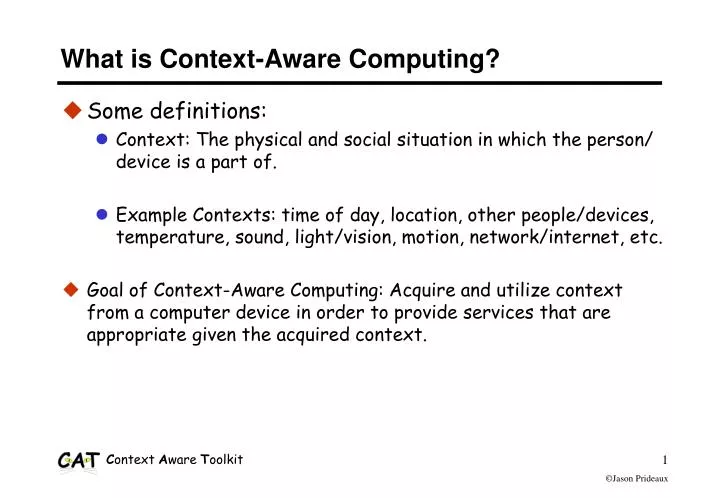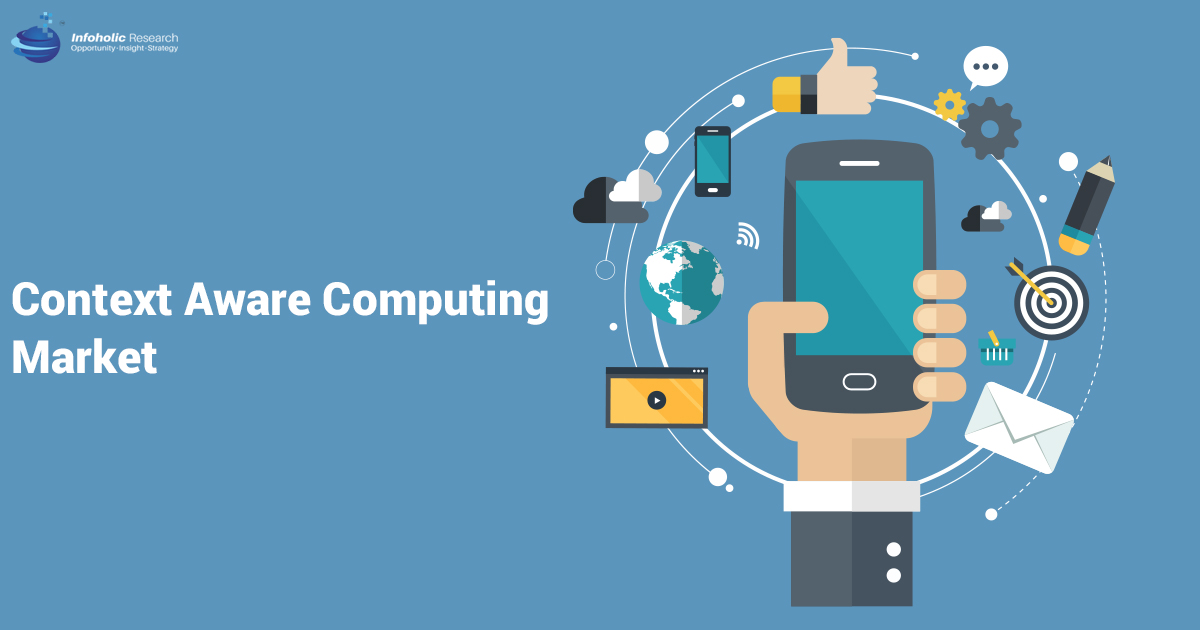“Context-Aware Computing: Weaving Technology into the Fabric of Our Lives
Artikel Terkait Context-Aware Computing: Weaving Technology into the Fabric of Our Lives
- The Symphony Of Sound: A Deep Dive Into Voice Recognition Technology
- The Rise Of The Intelligent Assistant: Navigating The World With AI By Your Side
- Decoding Emotions: A Deep Dive Into Sentiment Analysis
- The Thriving Mobile Ecosystem: A Deep Dive Into Its Components, Evolution, And Future
- Progressive Web Apps: The Future Of Web Experiences
Table of Content
Video tentang Context-Aware Computing: Weaving Technology into the Fabric of Our Lives
Context-Aware Computing: Weaving Technology into the Fabric of Our Lives

Context-aware computing, a paradigm shift in the way we interact with technology, is moving beyond simple functionalities to create intelligent systems that adapt and respond to our specific circumstances. Imagine a world where your devices anticipate your needs, proactively offering assistance and information based on your location, activity, and even emotional state. This is the promise of context-aware computing.
This article delves into the intricacies of context-aware computing, exploring its definition, core concepts, applications, challenges, and future potential. We’ll unravel the layers of this fascinating field and understand how it’s poised to revolutionize various aspects of our lives.
What is Context-Aware Computing?
At its core, context-aware computing involves the ability of a system to understand and react to its environment. This "environment" is not limited to physical surroundings but encompasses a wide range of factors, including:
- Location: Where the user is physically located (e.g., home, office, shopping mall).
- Activity: What the user is currently doing (e.g., walking, driving, attending a meeting).
- Time: The current date and time.
- Identity: The user’s profile, preferences, and relationships.
- Environment: Surrounding conditions like temperature, noise levels, and lighting.
- Device: The type of device being used (e.g., smartphone, smartwatch, laptop).
- Social Context: The presence and activities of other people nearby.
- Emotional State: The user’s mood or emotional state, often inferred from physiological data or behavior.

By gathering and processing this contextual information, a context-aware system can tailor its behavior to provide more relevant and personalized experiences. It can proactively offer information, adapt its interface, or automate tasks without explicit user input.
![]()
The Pillars of Context-Aware Computing: Sensing, Reasoning, and Acting
Context-aware systems typically operate based on three fundamental pillars:
Sensing: This involves acquiring contextual information from the environment. This is achieved through various sensors and data sources, including:

- Physical Sensors: GPS, accelerometers, gyroscopes, thermometers, light sensors, microphones. These sensors provide direct measurements of physical parameters.
- Software Sensors: Calendar applications, social media feeds, network connectivity, user profiles. These sensors extract contextual information from software applications and online services.
- Virtual Sensors: Inferred data derived from combining data from multiple sources. For example, inferring the user’s mode of transportation based on GPS data and accelerometer readings.
Reasoning: This involves processing the sensed data to derive meaningful insights and understand the user’s context. This is typically achieved through:
- Data Fusion: Combining data from multiple sensors to create a more complete and accurate picture of the environment.
- Pattern Recognition: Identifying recurring patterns in the data to predict future behavior or infer the user’s intentions.
- Machine Learning: Training algorithms to learn from data and improve their ability to understand context over time.
- Rule-Based Systems: Defining rules that specify how the system should react to different contextual situations.
- Ontologies: Using structured knowledge representations to define relationships between different concepts and entities in the environment.
Acting: This involves responding to the understood context by providing relevant information, adapting the system’s behavior, or automating tasks. This can include:
- Proactive Information Delivery: Displaying relevant information without explicit user request (e.g., showing traffic alerts based on location).
- Adaptive User Interfaces: Adjusting the user interface to match the user’s current task or environment (e.g., increasing font size in low-light conditions).
- Automated Task Execution: Automatically performing tasks based on contextual information (e.g., turning off lights when leaving home).
- Context-Aware Recommendations: Suggesting relevant products, services, or content based on the user’s context.
Applications of Context-Aware Computing: A World of Possibilities
The potential applications of context-aware computing are vast and span across various domains:
- Smart Homes: Automating lighting, temperature, and security systems based on occupancy, time of day, and user preferences. Imagine your thermostat automatically adjusting to your preferred temperature as you approach home.
- Healthcare: Monitoring patient health conditions, providing personalized medication reminders, and detecting falls. Context-aware wearable devices can alert caregivers in case of emergencies.
- Transportation: Providing real-time traffic updates, optimizing navigation routes, and adapting driving assistance systems based on road conditions. Your car could automatically adjust its speed and lane positioning based on traffic and weather conditions.
- Retail: Offering personalized shopping recommendations, providing location-based discounts, and automating checkout processes. Imagine your phone alerting you to a sale on your favorite brand as you walk past a store.
- Education: Adapting learning materials to individual student needs, providing personalized feedback, and monitoring student engagement. Context-aware learning platforms can tailor the curriculum based on a student’s learning style and progress.
- Tourism: Providing personalized travel recommendations, offering location-based information, and translating languages in real-time. Imagine your phone automatically translating street signs and menus as you explore a new city.
- Security: Enhancing security systems by monitoring user behavior, detecting anomalies, and providing personalized access control. A context-aware system could recognize your face and automatically unlock your phone or computer.
- Emergency Response: Improving emergency response times by providing real-time location information, assessing damage, and coordinating rescue efforts. Context-aware drones can assess disaster areas and provide rescuers with vital information.
Challenges and Considerations:
While the potential of context-aware computing is immense, several challenges need to be addressed:
- Privacy Concerns: Collecting and processing personal data raises significant privacy concerns. Robust privacy policies, data anonymization techniques, and user consent mechanisms are crucial.
- Accuracy and Reliability: Contextual information can be noisy and unreliable. Developing robust algorithms that can handle uncertainty and errors is essential.
- Computational Complexity: Processing large amounts of contextual data can be computationally expensive. Efficient algorithms and hardware are needed to ensure real-time performance.
- User Acceptance: Users may be reluctant to share their personal information or accept automated decisions made by context-aware systems. Transparency, control, and user education are critical for fostering trust and acceptance.
- Ethical Considerations: Context-aware systems can potentially discriminate against certain groups or reinforce existing biases. Careful consideration of ethical implications is necessary to ensure fairness and equity.
The Future of Context-Aware Computing: Towards Ubiquitous Intelligence
The future of context-aware computing is bright, with advancements in artificial intelligence, sensor technology, and cloud computing paving the way for more sophisticated and pervasive systems. We can expect to see:
- Increased Integration with AI: Combining context-awareness with artificial intelligence to create truly intelligent systems that can anticipate user needs and provide proactive assistance.
- Edge Computing: Processing contextual data locally on devices to reduce latency and improve privacy.
- Wearable Computing: Integrating context-aware sensors into wearable devices to monitor health, activity, and emotional state.
- Internet of Things (IoT): Connecting everyday objects to the internet and using contextual information to automate tasks and optimize resource utilization.
- Personalized Digital Assistants: Developing digital assistants that can understand user context and provide personalized recommendations and support.
Context-aware computing is poised to transform the way we interact with technology, creating a world where devices seamlessly adapt to our needs and enhance our lives. By addressing the challenges and embracing the opportunities, we can unlock the full potential of this transformative technology.
FAQ on Context-Aware Computing
Q: Is context-aware computing the same as location-based services?
A: No, location-based services are a subset of context-aware computing. While location is a key piece of context, context-aware systems consider many other factors beyond just location.
Q: How can I control the amount of data shared with context-aware applications?
A: Most context-aware applications provide settings to control data sharing. Review these settings carefully and only share the information you are comfortable with.
Q: Are context-aware systems always accurate?
A: No, the accuracy of context-aware systems depends on the quality and reliability of the sensors and algorithms used. Errors can occur, but these systems are constantly improving.
Q: How secure is my data when used by context-aware applications?
A: The security of your data depends on the security measures implemented by the application developer. Look for applications that use encryption and other security best practices.
Q: What are the benefits of using context-aware applications?
A: Context-aware applications can save you time, improve your productivity, and enhance your overall experience by providing personalized information and automating tasks.
Q: What is the role of machine learning in context-aware computing?
A: Machine learning is crucial for context-aware computing. It allows systems to learn from data, adapt to changing environments, and improve their ability to understand and respond to user context.
Q: How can businesses benefit from context-aware computing?
A: Businesses can use context-aware computing to personalize customer experiences, optimize operations, and improve decision-making.
Q: What are the ethical considerations of context-aware computing?
A: Ethical considerations include privacy, fairness, transparency, and accountability. It’s important to ensure that context-aware systems are used responsibly and ethically.
Conclusion
Context-aware computing represents a significant leap forward in the evolution of technology. By understanding and responding to our environment, these systems offer the potential to create more personalized, efficient, and intelligent experiences. While challenges related to privacy, accuracy, and ethics must be carefully addressed, the potential benefits of context-aware computing are undeniable. As technology continues to advance, we can expect to see context-aware systems become increasingly integrated into our lives, shaping the future of how we interact with the world around us. From smart homes to personalized healthcare and intelligent transportation, context-aware computing is poised to revolutionize various aspects of our lives, paving the way for a more intuitive and responsive technological landscape. The key lies in responsible development and deployment, ensuring that these powerful tools are used to enhance human well-being and create a more equitable and connected world.

